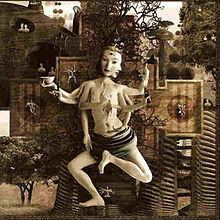Length 54:34 Release date 2001 | Artist The Tea Party | |
 | ||
Released October 16, 2001 (Canada) Nominations Juno Award for Rock Album of the Year Similar | ||
The Interzone Mantras (2001) is the sixth album from Canadian rock group The Tea Party.
Contents
Named after William S. Burroughs' book of short stories Interzone and the band's interest in eastern mysticism and esoteric philosophies, the songwriting on The Interzone Mantras builds on the subtle electronica and ballads of Triptych, whilst returning to the familiar territory of their earlier albums with 1970s rock and world music influences. Jeff Martin explained that the album was a return to basics:
"The last two records, Transmission and Triptych, were very much creations of the studio - meticulously built. With this record we felt that we wanted to put a spark of passion underneath our asses.
"So many people have told us that we're this great live rock band, and I just wanted to see if, as producer, I could capture that on this record. I put us in a rehearsal space, the three of us, faced each other with just guitar, bass and drums - no toys - and, you know, 'let's Rock!'" The new approach fired the band up to such an extent that the album was recorded in just twenty days - "unheard of" for The Tea Party, Martin says.
Lyrically the album draws from the works of modern writers Aleister Crowley, Mikhail Bulgakov, Wim Wenders, to ancient Greek mythology (Morpheus on "Lullaby"). The lyrics themselves written by Martin when holidaying in Prague, after the music was written from jams in the band's rehearsal space.
The first 100,000 Canadian copies of The Interzone Mantras were packaged with a special lenticular cover, with Alessandro Bavari's depiction of Shiva moving depending on the viewing angle. Although not as commercially successful as previous albums, The Interzone Mantras is The Tea Party's highest charting album in Australia (debuting at #6 on the ARIA chart) and is certified Gold in Canada. It was also nominated for "Rock Album of the Year" at the 2003 Juno Awards.
The tea party interzone
Singles
Credits
Guests
Songs
1Interzone3:39
2Angels4:55
3The Master & Margarita4:13
